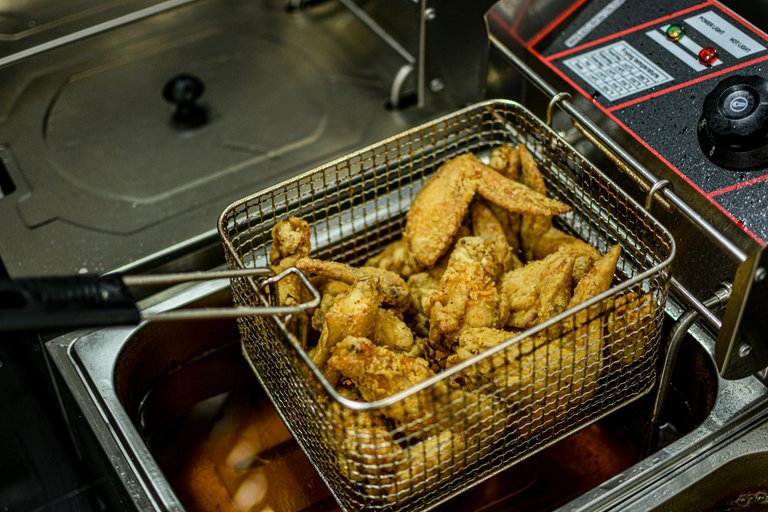As a child, I used to visit a family friend who sells fried plantain, yam, and akara. If you are a Nigerian and you do not know this food snack, then you have been living on the tree. From doughnuts, fries, fried chicken, puff puff, and any other fried food, we all love frying and we all love fried foods because of variety of reasons including the taste, the feel, and the smell but in all this, frying is science and it is fun, so let's discuss frying.
When we put food into hot oil or butter, science begins immediately and although we might not notice it does happen. First, let's start with the temperature required for frying. If you are frying with a temperature less than the temperature of the food being immersed into the oil, it wouldn't fry and this is why for a food to fry, the oil is suppose to be at around 180 degrees Celsius or 360 degrees Fahrenheit. For those who do not have the luxury of putting a thermometer into a hot oil, you would know an oil is hot when you drop your food into it and it bubbles or even starts to splash. When this happens, it is moisture on the surface of the food boiling off the surface and this happens because the temperature of the oil is about twice the boiling point of water.
Once the food such as plantain or potato is thrown into the oil, the surface begins to dehydrate followed by a crispy crust forming on the surface of the food. As the water leaves the surface of the food, it leaves gaps which you can always find in fried foods and these gaps allow for the oil to get into the food in a process known as Oil uptake. talking about oil uptake, some researchers propose the the amount of water lost from a food is directly proportional to the oil uptake. So more water loss means more oil uptake causing the food to have a high oil content.
There is a woman I buy fried fish from and I always complain of her fish not being properly cooked and this is as a result of the woman removing the food from the oil too quickly thereby not allowing enough heat transfer into the food. While the outside of the food molecule is being heated from convection, the inside molecule of a food is being heated by conduction.
https://media.freemalaysiatoday.com/wp-content/uploads/2024/10/cd68876a-palmoil-lifestyle-emelpic-141024.webp
freemalaysiatoday
When there is a batter or a breading covering other food items in a food, the batter is the one being fried because it is the outer layer touching the oil. Heat transfer occurs to the food inside or between the bread but it doesn't lose lot of water content. Another thing I saw from a woman which I didn't know had scientific backing was using beer based batter to fry. I had to check what really happens and it shows that adding beer to batter will help soften and make the batter crispier as a result of the carbon dioxide in the beer that forms bubble while some protein in the beer prevents the bubbles from busting very fast like they would do. But study has shown that beer batter have more oil uptake than wheat batter or water based rise batter.
You would realize that when you want to fry, depending on the type of oil you are using, they all produce smoke. This is because every oil have its varying smoking point. This happens when heat breaks down the lipid in oil to produce volatile compounds that can become gas easily. These compound can mix with the atmosphere as smoke or when they enter into the food, they can change the taste and flavor of the food. So when next you are using that oil in the kitchen to fry, remember that it has science in it.
REFERENCE
https://www.researchgate.net/publication/336832953_Mechanisms_of_oil_uptake
https://scienceandfooducla.wordpress.com/2015/08/25/fair-food-deep-frying/
https://www.npr.org/sections/thesalt/2016/03/24/470396393
https://pubmed.ncbi.nlm.nih.gov/20623702/
https://www.scientificamerican.com/article/beer-batter-is-better/
https://www.livestrong.com/article/530119-when-deep-frying
https://www.health.harvard.edu/staying-healthy/the-truth-about-fats-bad-and-good
https://www.mayoclinic.org/healthy-lifestyle/nutrition-and-healthy
https://algaecookingclub.com/zine/cooking-oil-smoke-points

